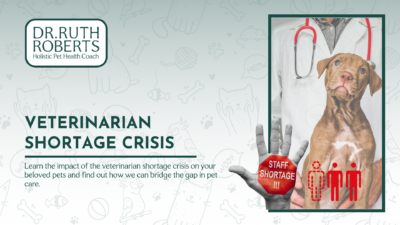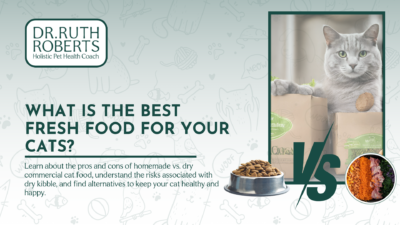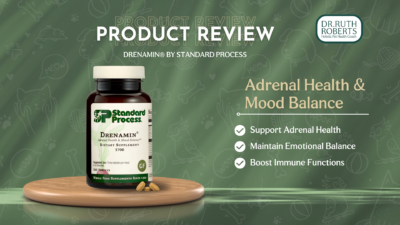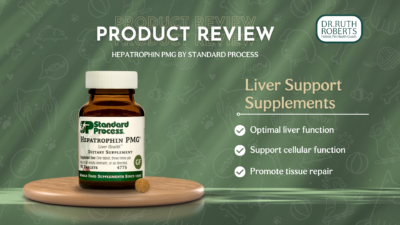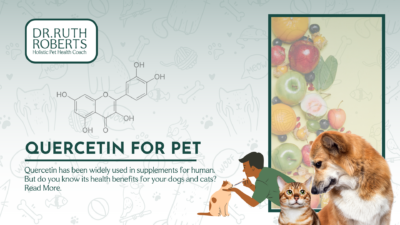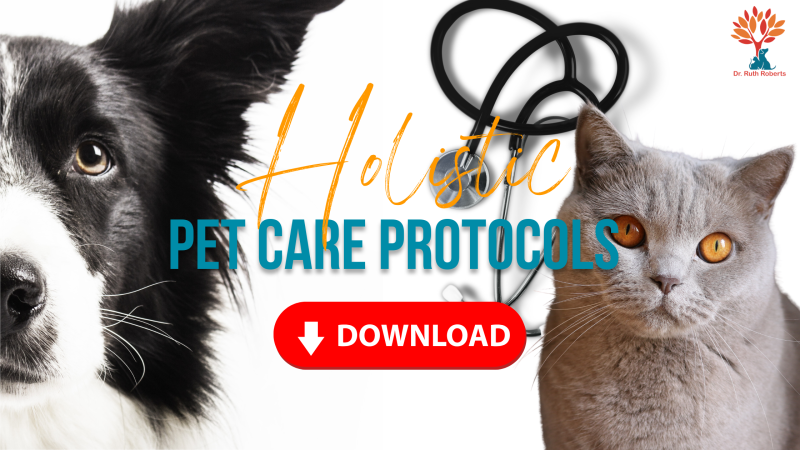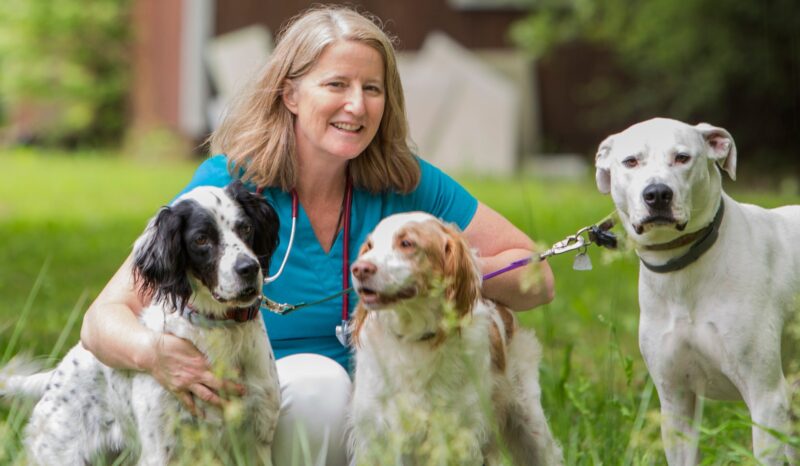In the near thirty years that I’ve been practicing veterinary medicine, it truly seems like the occurrence of pet cancer is on the rise. Not only that, but it’s becoming even more difficult to treat. But when you know what you’re up against, you can help protect your pet from cancer and help them heal naturally.
When did this happen?
I can remember the days in my practice where cancer diagnoses were fewer and far between, and most often doled out to senior pets who had lots of miles on their tires.
Fast forward fifteen or so years, and I could hardly believe what I was seeing. Puppies, only months old, came to me with the devastating disease. Young pets who should have been completely healthy were suddenly faced with shocking and hard-to-treat cancers.

As the years progressed, the pattern only seemed to get worse. I had to do something, so I’ve spent years trying to figure out what was causing this horrible pattern, and what I can do to help my patients.
After lots of examination, research, and consultation with experts I trust, we’ve been able to nail down the things that really seem to be contributing to this horrible pattern. There are three big ones that I worry about:
- Toxin Exposure
- Spaying and neutering pets too early
- Eating pro-inflammatory diets
All of these things contribute to the way genes are expressed. Diet, environment, and toxin exposure all directly affect our pet’s DNA (and ours, too!). When these factors change dramatically over the years, it causes the affected genes to make different variations of proteins. These proteins have control over how the cells operate, so altering them is going to change the way the cells within the body behave. It’s possible that these changes may allow cancer cells to grow faster, and even minimize the body’s ability to fight cancerous and precancerous cells efficiently.
So, let’s talk about how we can tackle this.
Toxic love
One of the biggest and most obvious culprits of cancer is one I’ve been harping on for a while now. Yep, it’s environmental toxins. Detergents, home cleaners, shampoos, and so many more household and garden products are all full of countless chemicals that our pet’s bodies aren’t equipped to process.
Dirty laundry
The laundry detergents of today are not the same products your mother
used. Gone are the days of magic kitchen-based formulas, sun bleaching, and old-fashioned stain removal. Now, there’s a product to remove any stain, to shrink or unshrink garments, soften them, make them do a little dance – you name it! But all of this convenience comes at a price.

The harsh chemicals and compounds in household cleaners might do a tough job on a mess, but they’re doing worse to your pet. These chemicals linger on clothes and bedding, and on your clean floors and dishes long after they’re “washed.” They are then easily absorbed by your pet’s skin, feet and mouth, and sent through the body for processing. This means that even your pet’s internal organs are being exposed to these chemicals, and their body just can’t handle them.
Your best solution to this hazard is to go as natural as possible. MyGreenFills is my personal favorite for laundry products.
Tick, tick, tick…
Pesticides are another really hot button here. For pets, this often means flea and tick preventatives and vaccines. In most places, it’s not really necessary to use these products year-round. In cooler months, these pests really do hibernate, and your chances of seeing a flea and a snowflake in the same month are really slim.
Use the safest possible products to protect your pets when they need it. In months when mosquitoes abound, use a simple product like Heartgard to prevent heartworm. For solid protection against fleas and ticks in warmer months, use a Seresto collar. You can use it when necessary and pop it back in the can to keep it fresh for several weeks until you need it again.
Never give your pet oral flea or tick products. The high dose of pesticide is potent enough to linger in your pet’s system for thirty days, and that alone should be a red flag.
Take a shot
Vaccinate responsibly (a protective rabies vaccine is really in everyone’s best interest), but as minimally as possible. This is a delicate subject, and the best protocol for every pet is different. Many vets are very understanding in this matter, so don’t be afraid to open the discussion and ask questions. Your vet wants what is best for your pet as much as you do. So, speak up and voice your concerns.
Be aware of toxins in your everyday life to help reduce your pet’s chemical exposure. BPA in many plastics, for example, wreaks havoc on the endocrine system. It can be found in more places than you think (like in canned food liners). Check labels, do research, and avoid plastic whenever possible.
Snipping too soon
Spaying and neutering pets too early can also increase their risk for certain cancers. I know this warning goes against everything you’ve ever been told, but hear me out.

More and more cats and dogs are being spayed or neutered far too early. Many animals are sterilized as early as eight weeks of age, which is entirely too soon. It’s true that spaying and neutering pets helps control pet overpopulation. And can reduce or eliminate a lot of undesirable behavior. But there are a lot of factors at play here.
When you remove a pet’s testicles or ovaries (which is what happens during these procedures), you’re also removing their ability to make and balance some pretty important hormones. So you can imagine how this drastically changes the activity in their bodies and the cells that make it work. Things are bound to go a little haywire.
Many studies have shown that pet who are spayed or neutered later in life (or not at all) have a significantly lower occurrence of cancer and joint-related disease. In fact, one study showed that a group of intact Golden Retrievers had absolutely zero cruciate ruptures – which is incredible, as it’s the most common injury seen in that breed, and happens more often than not in most Goldens.
Safety first!
Use good sense with this. Keeping your pet safe is your first priority. Some intact dogs or cats will become escape artists, for the purpose of finding a mate. And that creates a lot of trouble (especially if they are successful). Work closely with your vet, and if spaying or neutering is the best choice, just wait a little while. For male dogs and cats, waiting until at least 1-2 years of age is good practice. Females should go through their first heat cycle before being spayed. This allows their body to mature and helps them develop more completely.
It all starts in the bowl

Most dogs and cats are raised on kibble or canned food from the get-go. These commercial foods are often made with very pro-inflammatory ingredients (corn and chicken products are the most common ingredients), which creates inflammation in the body. Inflammatory foods cause health problems like leaky gut syndrome and food intolerance and make existing or potential health issues worse.
When the body’s working systems and organs encounter inflammation, they’re unable to function the way they should. Right down to their very cells, the function becomes confused and weakened. This allows cancer cells to grow and spread with little resistance from the immune system.
Great pet health begins with putting healthy, wholesome food in their bowls and bellies. Feed a diet that encourages the body to operate as it should. It’s the best way to keep it from behaving in a way it shouldn’t.
Feeding your pet a diet of anti-inflammatory, whole foods is the easiest way to fight inflammation and disease. A balanced diet of protein, lots of veggies, and healthy fat will provide their body with all of the nutrients they need. Don’t forget to complete your pet’s diet with a quality multivitamin.
Now, Take a Deep Breath
While you can’t protect your pet from every little thing (their little claws just wouldn’t bode well in a bubble), you can give them a great advantage over pet cancer and disease. Reducing your pet’s exposure to toxins, spaying or neutering them at a more responsible time, and feeding them a clean, fresh, and healthful diet will help keep their health on a better track.
Giving your pet the tools they need to fuel and build a healthy body sets the stage for good health. And if your pet does fall prey to disease, injury, or illness, don’t panic. There are many natural, holistic, and gentle treatments that can help heal your pet and make them feel better, without introducing more toxins or harsh chemicals.
Help is only one phone call away. You can rest assured that I will always stand by you and stand up for your pet’s best health. I’m your pet’s ally, and I’m here to help no matter what life throws their way.


